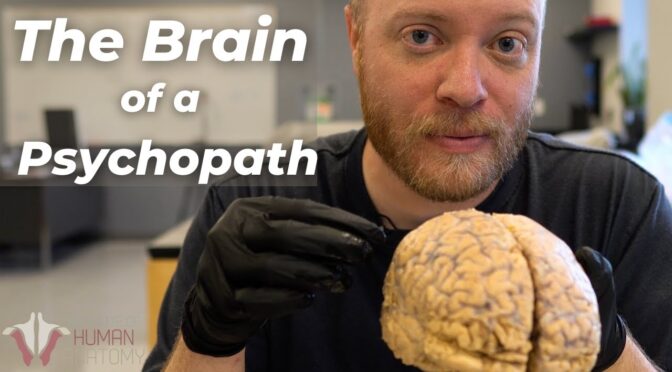This article draws its insights from a compelling video titled “Inside the Brain of a Psychopath” by the YouTube channel Institute of Human Anatomy. The video provides a thorough examination of psychopathy, dissecting the roles of genetics, brain structure, and environmental influences in shaping this condition.
Contents
- The Genetic Link and MAOA
- The Brain’s Role
- Environmental Factors
- Differences Between Psychopaths and Sociopaths
- The Challenge of Treatment
- The Role of Parenting and Society
- The Limitations of Current Medical Technology
- Final Thoughts
- The video
The Genetic Link and MAOA
The video begins by discussing the role of genetics, particularly the MAOA gene, in psychopathy. This gene is responsible for breaking down neurotransmitters like serotonin, dopamine, and norepinephrine. A low-activity variant of this gene has been linked to aggressive behavior. Interestingly, this gene is located on the X chromosome, making males more susceptible to its effects (since they have only one X chromosome, unlike females who have two).
The Brain’s Role
The video also highlights the significance of brain structure and function in psychopathy and sociopathy. PET scans have revealed that individuals with antisocial personality disorder (APD) show low activity in the prefrontal cortex and limbic system when contemplating moral and ethical questions. This suggests a lack of empathy and a skewed moral compass. The dorsolateral prefrontal cortex, responsible for rational decision-making, is also affected, leading to a rationalization of irrational behavior.
Environmental Factors
While genetics and brain structure play a role, environmental conditions are also crucial. Childhood trauma, such as abuse or witnessing horrifying events, can tip the scales towards psychopathy or sociopathy. This is especially true for sociopaths, who are more reactionary and less calculating than psychopaths.
Differences Between Psychopaths and Sociopaths
Psychopaths are more calculating and can blend in with society, often occupying positions of power like CEOs or lawyers. Sociopaths, on the other hand, are more abrasive and reactionary, often acting on impulse without concern for the consequences. Both lack empathy and remorse, but their methods of manipulation and deceit differ.
The Challenge of Treatment
According to current medical understanding, treating these conditions is extremely difficult due to the complex interplay of genetics and environmental factors. Even if genetic engineering advances to a point where the genetic aspects can be treated, the emotional and environmental factors would still need to be addressed.
The Role of Parenting and Society
The video concludes by emphasizing the importance of good parenting and role models in mitigating the risks of developing psychopathy or sociopathy. The presenter, who is a parent himself, acknowledges the challenges of parenting and suggests that being better parents and role models could be a way to make significant strides in addressing these conditions. He advocates for the development of rationality and logical decision-making in children as a preventive measure (a thought that resonates with many who understand the complexities of human behavior).
The Limitations of Current Medical Technology
Current medical technology, unfortunately, doesn’t offer much hope for treating these conditions. The issues are deeply rooted in genetics and brain structure, complicated further by environmental factors. Even if future technologies like CRISPR could address the genetic aspects, the emotional and environmental elements would still pose a challenge.
Final Thoughts
In summary, psychopathy and sociopathy are complex conditions influenced by a myriad of factors including genetics, brain structure, and environment. While current medical understanding and technology fall short of providing effective treatments, societal efforts, particularly in the realm of parenting, may offer some hope. The video serves as a comprehensive guide to understanding these conditions, providing valuable insights that could be crucial in future research and societal efforts.
This article aims to provide a detailed understanding of psychopathy and sociopathy based on the video by the Institute of Human Anatomy. The subject may be unsettling, but knowledge is the first step towards understanding and, hopefully, finding solutions.

